

Damion Smy
Hyundai i30 N TCR celebrates 10 years of ‘N’ with Gran Turismo 7 debut
8 Hours Ago
The Kia Sportage SX+ diesel might be the smartest pick in what's a sprawling, and generally impressive, range.
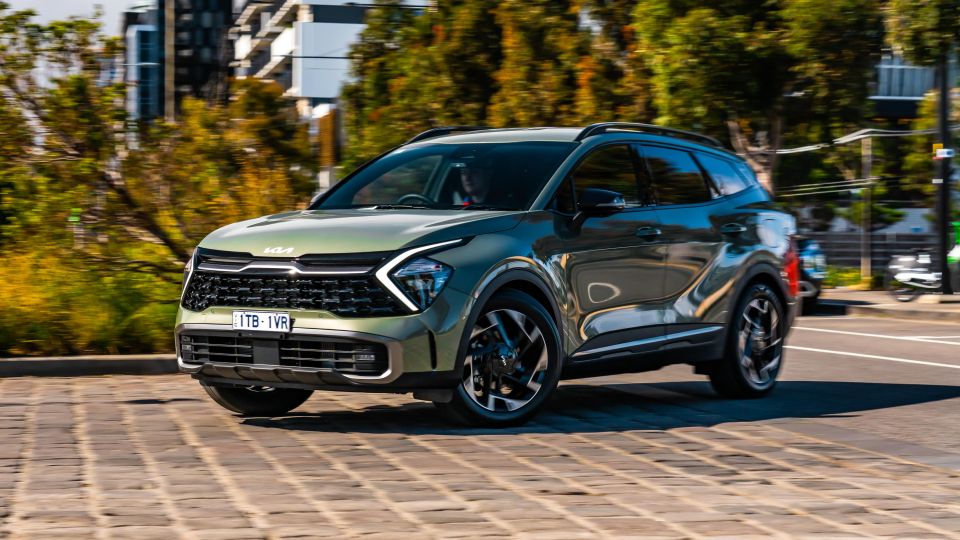
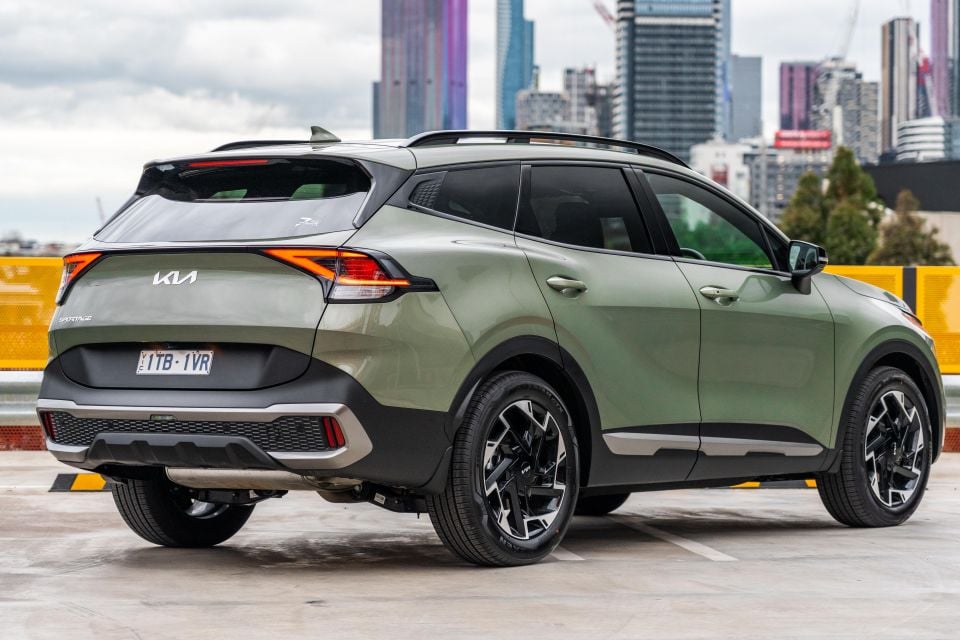

Quickly see how this car stacks up against its competition. Select any benchmark to see more details.
Where expert car reviews meet expert car buying – CarExpert gives you trusted advice, personalised service and real savings on your next new car.
The Kia Sportage has had its styling turned up to 11 in current fifth-generation form, with an angular exterior design that you either love or hate.
The mid-size SUV is currently Kia’s top-selling car in Australia, and competes in the hotly-contested medium SUV segment against the likes of the Toyota RAV4 and Mazda CX-5, as well as the related Hyundai Tucson.
The SX+ trim on test here is one rung down from the top-spec GT-Line, and the only variant in the Sportage range available with all three engine options: two petrol, and one diesel.

Our tester was fitted with the most expensive 2.0-litre four-cylinder turbo-diesel engine and all-wheel drive, and was finished in a rather delicious shade of green called ‘Jungle Wood Green’.
The SX+ can be distinguished from the rest of the Sportage range by its unique 19-inch two-tone machined alloy wheels, while it shares its rugged-looking body cladding with the GT-Line.
Is the 2022 Kia Sportage SX+ 2.0D AWD the pick of the range?
The Kia Sportage SX+ 2.0D AWD is the third most expensive variant in the range, undercutting the flagship GT-Line petrol and diesel variants.
It’s priced from $46,900 before on-road costs, with Kia currently offering a drive-away price of $51,902 for Victorian buyers – each state has slightly different taxes. The SX+ can also be had with AWD and a turbo-petrol engine for $43,500 before on-road costs, a $3400 saving.
There aren’t nearly as many diesel-powered mid-size SUV competitors to the Sportage as there once was.
The Kia is slightly more expensive than its twin under-the-skin, the Hyundai Tucson Elite 2.0D AWD ($45,400), the Mazda CX-5 Touring Active 2.2D AWD ($45,880), and the left-field SsangYong Korando Ultimate 1.6D AWD ($40,990 drive-away). It does undercut the Volkswagen Tiguan 147TDI Elegance ($54,690), and the Peugeot 3008 GT Diesel ($56,753) though.
If you’re after a fuel-saving benefits of diesel, you could also consider similarly-priced hybrid offerings such as the Toyota RAV4 Cruiser AWD Hybrid ($48,750), Subaru Forester Hybrid S ($49,340), or GWM Haval H6 Ultra Hybrid ($45,990 drive-away).

2022 Kia Sportage pricing:
All prices exclude on-road costs

Buy your new car without the stress. It's fast, simple and completely free.

Great service from Travis and team, second time I have used this business would not hesitate to recommend them to anyone
Craig C.
Purchased a Ford Ranger in Sunshine Coast, QLD
CarExpert helped Craig save thousands on his Ford Ranger, now let us save you on your next new car.
Find a dealThe Sportage SX+ is very easy to enter thanks in part to its high-riding SUV body, and a seating position that’s level with my hip.
The faux leather seats have a very fetching design with a quilted panel in the middle. They look quite upmarket in all honesty.
The driver’s seat is comfortable and supportive. I’d say I could drive for a very long time without feeling any discomfort whatsoever.


The electric driver’s seat adjustment with two-way power lumbar is a very welcome addition that makes dialling in your desired seating position a lot easier. It’s disappointing you have to step up to the flagship GT-Line to get this on the passenger seat, however.
The large 12.3-inch touchscreen infotainment system is very high-resolution and has a snappy operation. It’s a bit of a stretch to reach the far left-side of the display from the driver’s seat though because it’s so big.
There are some interesting features, such as a voice memo function and Sounds of Nature, that are present in the Sportage’s infotainment system. These features are also in other current Kia models and are interesting quirk that set them apart from others.


There’s only wired Apple CarPlay and Android Auto, unlike the smaller 8.0-inch unit in the entry-level S trim which gets wireless Apple CarPlay and Android Auto – albeit a slightly buggy version of it.
It’d be nice to not have to deal with a USB cable that gets a bit awkward around the gear selector and centre console buttons. I can’t complain though because the screen with Apple CarPlay on looks freaking fantastic.
Next to the large infotainment touchscreen is the ‘Basic’ digital instrument cluster, which is like an alarm clock, and features a 4.2-inch LCD central display.


Although this digital instrument cluster is basic, it shows you all the information you need to see while driving, such as a digital speedometer, at all times.
Even though the SX+ misses out on the dual top-of-the-range 12.3-inch screens reserved for the flagship GT-Line, its digital instrument cluster doesn’t really add much more in the way of functionality, given it lacks a maps screen.
The GT-Line does get the the camera-based Blind Spot View Monitor though, which pops up in the digital instrument cluster when you put the indicator on. It’d be nice to have this feature on the SX+ but it’s not absolutely critical.


One aspect of the interior that takes a while to get used to are the toggle-able HVAC and media controls that sit on a slim touchpad below the touchscreen. It does look quite classy and once I got used to the operation it became second nature.
There are a few things that feel a bit awkward in this SX+ trim.
First of all it gets glossy piano black material on the centre tunnel that has obvious blank buttons, and was quite smudgy and gross-looking after a week.


It’s also paired with a retro-style T-bar gear shifter. A sleeker shift-by-wire rotary dial is reserved for the GT-Line. The T-bar shifter isn’t ugly by any means, but it definitely feels more 1980s family sedan than 2022 family SUV.
This particular shifter also causes a couple of other minor grievances, including hiding the engine start button and obscuring the heated seat buttons, which forced some awkward reaching from my driving position.
There are a number of redeeming qualities though, including the retractable cup holders, solid-feeling buttons, and the decently-sized centre console. The glovebox is pretty big too.


The Harman Kardon premium sound system that’s exclusive to the SX+ and GT-Line absolutely slaps. I’m sure my colleague James Wong could testify Super Freaky Girl by Nicki Minaj sounds quite good with the speakers – that’s right, no Mariah here.
There’s an impressive amount of space in the second row. I had oodles of knee and head space at a leggy 182cm. This has always been a tricky thing for me because my long legs make it hard to get comfortable in the second row of cars.
The seat base in the second row is quite plush and the back rest is reclined at a nice angle that allows you to get quite comfortable. You can easily have two or three adults in the back of the Sportage.
In addition to the comfy second row, there are USB-C ports in the front seat backrests that are a nice touch, as well as a large air vents in the back of the centre console.




Even by the standards of its ever-expanding rivals, the Sportage has an impressive boot. It has 543L with the rear seats upright, and 1829L with them down.
I had an entry-level Sportage S with the 2.0-litre naturally-aspirated four-cylinder petrol over the Christmas/New Years break late last year and took it camping. The car was able to carry every that I threw at it and then some.
What I like even more is there’s a full-size spare tyre standard across the Sportage range which is great peace of mind for people, like myself, who do a lot of kilometres travelling along shonky country roads.

Powering diesel variants of the Kia Sportage range is a 2.0-litre four-cylinder turbo-diesel that produces 137kW of power and 416Nm of torque.
This exact engine is also available in the Hyundai Tucson, and offers 1kW and 16Nm more than the previous-generation diesel Sportage.
The turbo-diesel engine is mated to an eight-speed torque-converter automatic transmission, with drive sent through an all-wheel drive system.

The Sportage SX+ is also available with a 2.0-litre naturally-aspirated four-cylinder petrol engine (115kW/192Nm) with a six-speed auto and front-wheel drive, or a 1.6-litre turbocharged four-cylinder petrol engine (132kW/265Nm) with a seven-speed dual-clutch automatic and AWD.
Claimed fuel economy for the Kia Sportage with the 2.0-litre turbo-diesel is 6.3L/100km, but during our time with our Sportage SX+ tester we saw around 7.5L/100km over a mix of highway and city driving.
All Sportage models have a 54L fuel tank, with diesel variants coming with a diesel particulate filter (DPF).
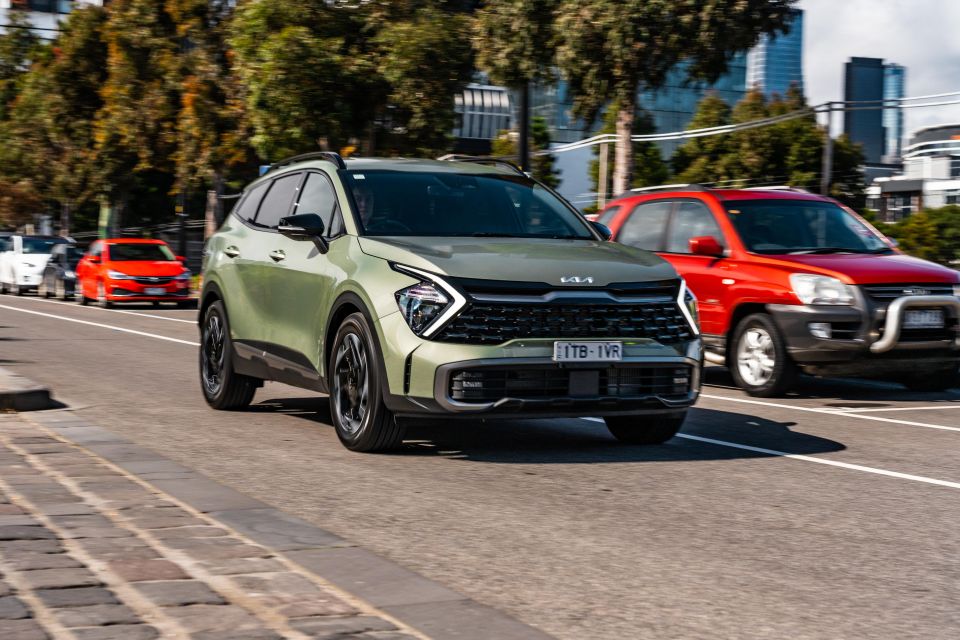
Where expert car reviews meet expert car buying – CarExpert gives you trusted advice, personalised service and real savings on your next new car.
A turbo-diesel might be an obvious pick for some in a mid-size SUV, but I’ve always thought diesels were a little too “agricultural” for city-centric cars, and better reserved for utes and larger SUVs.
Small-capacity turbo-diesels have been used in smaller cars for decades but my view before driving the diesel Sportage were they were either too rattly or too coarse.
Our tester changed my mind, and broader opinion of modern turbo-diesel engines completely.
When the engine turns over there’s an unmistakable diesel sound, but it’s nicely refined and subdued from inside the Sportage.

There are obvious vibrations that emanate from the diesel engine through to the floor when stopped at a traffic light, though. This one of the few times it’s obvious you’re driving a diesel.
This sense of refinement continues when taking off. The eight-speed torque-converter automatic transmission acts naturally, and keeps the Sportage within its torque band to deliver an effortless feeling.
Even with firmer prods of the throttle, the diesel Sportage doesn’t scream or clatter, but instead continues to provide torque by the bucket-load. It definitely wasn’t blow-your-socks-off quick, but it’s punchy enough to pin you back in the seat.
Although you might expect the Eco drive mode to dull the driving experience, the engine still provides enough oomph to get going. With the transmission working to keep the revs low in Eco, the car feels even quieter overall.
The diesel Sportage steers like a smaller and zippier car, despite being the heaviest variant in the range (1759kg).

The steering wheel is a dream to hold and use, with weighting on the lighter side making it easy to change direction quickly. This is most apparent while driving in the city, where the I spent the majority of my time with the car.
The all-wheel drive system comes in handy around the city when navigating wet tram tracks on corners, where a front-wheel drive car may end up chirping its tyres if you get greedy with the accelerator.
A front-wheel drive Sportage can definitely conquer the majority of urban obstacles with no sweat, but having all-wheel drive makes you feel more confident.
Unlike its Hyundai Tucson twin under-the-skin, the Sportage receives a bespoke Australian suspension tune, which is definitely apparent on less-than-ideal B-roads.
Kia has done a great job dialling in the suspension tune for the Sportage, as it strikes a neat balance between feeling compliant and controlled over all the lumps and bumps of both urban and rural driving. Goldilocks would approve.

Speaking of rural driving, the diesel-powered Sportage excels and makes the most sense during highway and freeway driving. It’s effortless and comfy along the freeway – it just gets on with the job.
There were moments during my testing where I saw fuel economy dip into the 5.0 and 6.0L/100km range, but I wasn’t paying too much attention to that because I was just soaking in how comfortable the car was.
The adaptive cruise control when activated is quite eager to put on the brakes when a car is ahead, which either forces you to slow down and match its speed or push the accelerator to speed up and go around it.
My last name is Quick, so I think you can understand which option I’d choose more often than not.




Sportage SX+ highlights:


Sportage GT-Line adds:
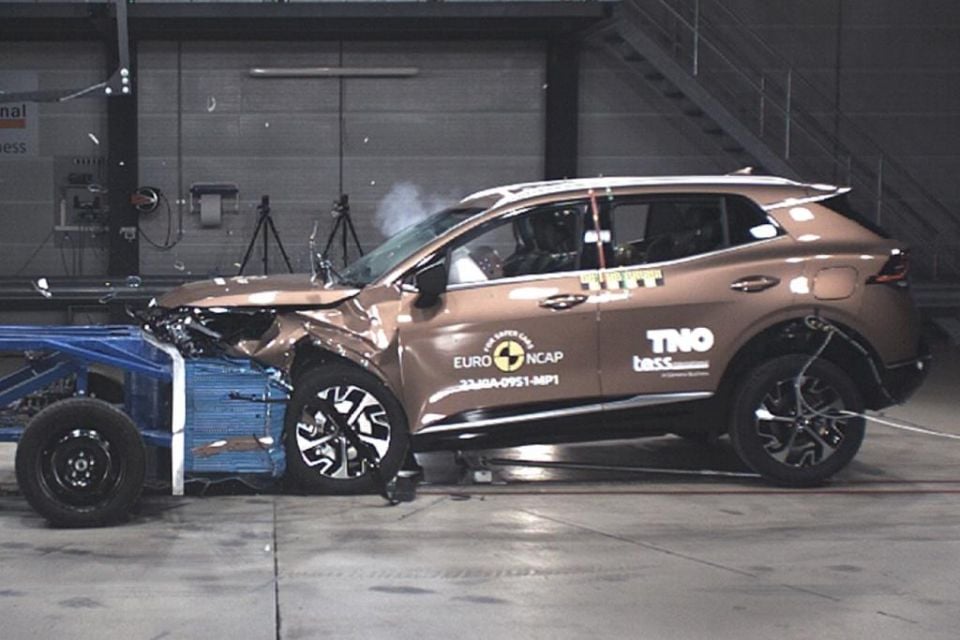
The Kia Sportage has a five-star ANCAP safety rating, based on tests carried out by Euro NCAP in July 2022.
It scored 87 per cent for adult occupant protection, 87 per cent for child occupant protection, 66 per cent for vulnerable road user protection, and 74 per cent for safety assist.
Standard safety features include:
Sportage GT-Line adds:

The Sportage, like all Kia models, is backed by a seven-year, unlimited-kilometre warranty with seven years of capped-price servicing.
Kia’s seven-year warranty is one of the best in the industry at the moment and is only matched by budget challenger brands such as MG, GWM, and SsangYong.
At the moment it’s only trumped by Mitsubishi with its 10-year, 200,000km warranty that reverts to five years or 100,000km if you don’t service your car within the Mitsubishi dealer network.
Logbook servicing for the Sportage with the turbo-diesel engine is required every 12 months or 15,000km, with the first seven services capped at $349, $541, $435, $794, $393, $695, and $417. This equates to $3624 over seven years.

I first hopped into the Kia Sportage SX+ 2.0D AWD thinking I’d hate the diesel powertrain, but in the end found it to be my favourite part.
Kia has done a good job with the current Sportage to make it stand out on the road and drive comfortably.
The almost top-spec Sportage SX+ with the turbo-diesel shapes as the pick of the range, as it’s cheaper than the flagship GT-Line and has the majority of its features.
If you’re budget-oriented and spend most of your time in the city, the base petrol may be an even smarter pick.
Although there are a few interior functionality issues that centre around the T-bar gear shifter, these can be ultimately solved by stepping up to the GT-Line. This comes at a cost though, obviously.

Click an image to view the full gallery.
MORE: Everything Kia Sportage
Where expert car reviews meet expert car buying – CarExpert gives you trusted advice, personalised service and real savings on your next new car.
Jack Quick is an automotive journalist based in Melbourne. Jack studied journalism and photography at Deakin University in Burwood, and previously represented the university in dance nationally. In his spare time, he loves to pump Charli XCX and play a bit of Grand Theft Auto. He’s also the proud owner of a blue, manual 2020 Suzuki Jimny.


Damion Smy
8 Hours Ago
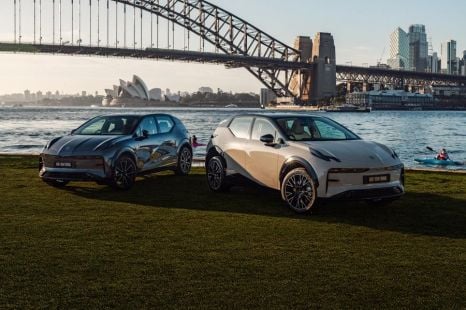

Max Davies
14 Hours Ago
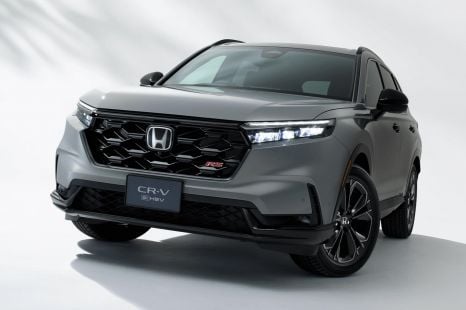

James Wong
2 Days Ago
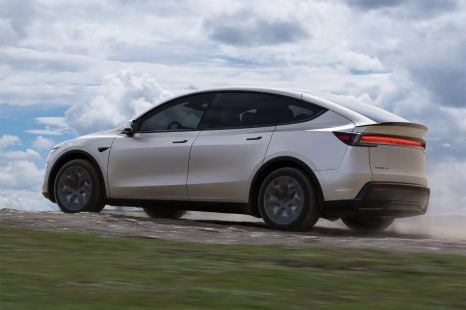

Derek Fung
2 Days Ago


Max Davies
3 Days Ago


Damion Smy
4 Days Ago